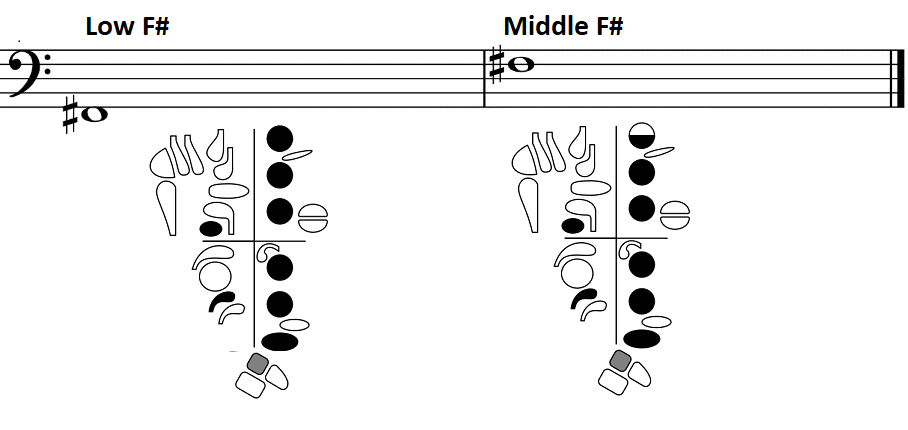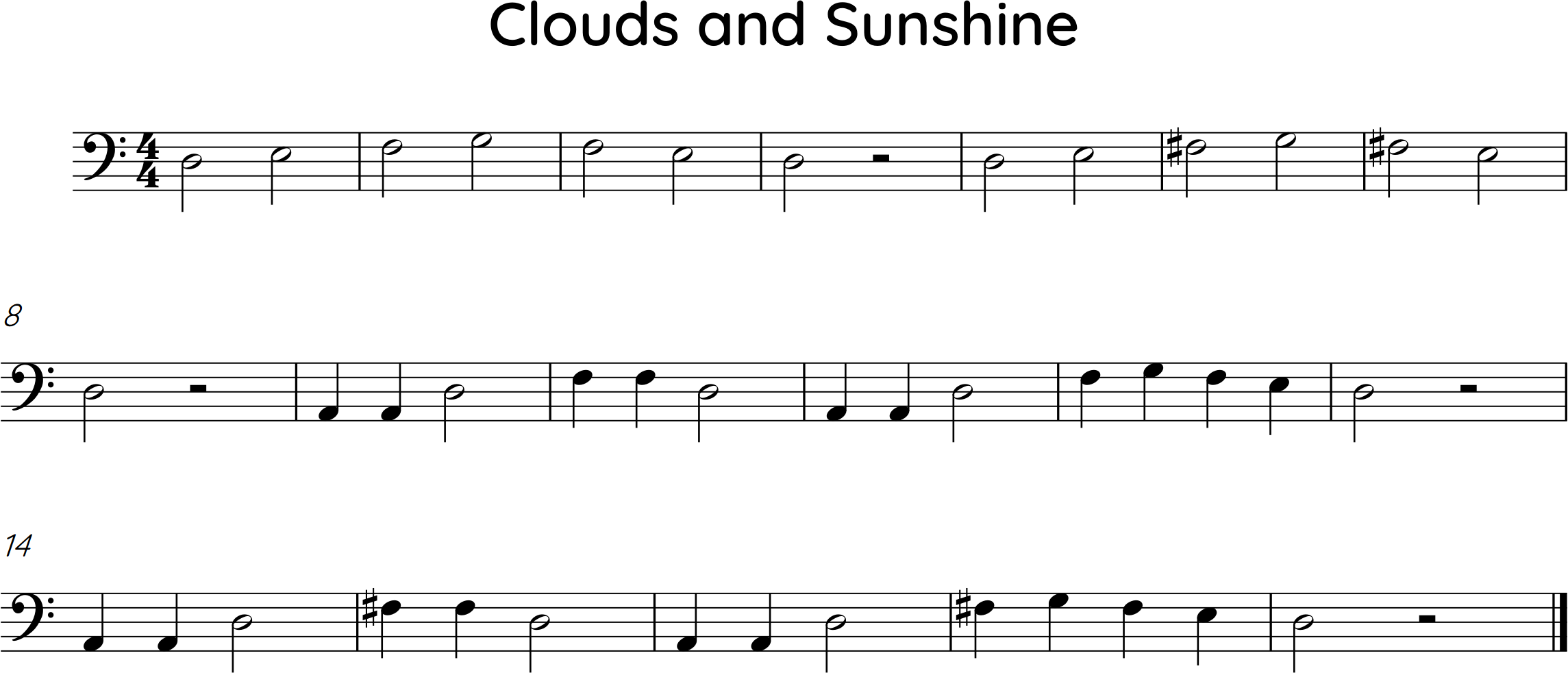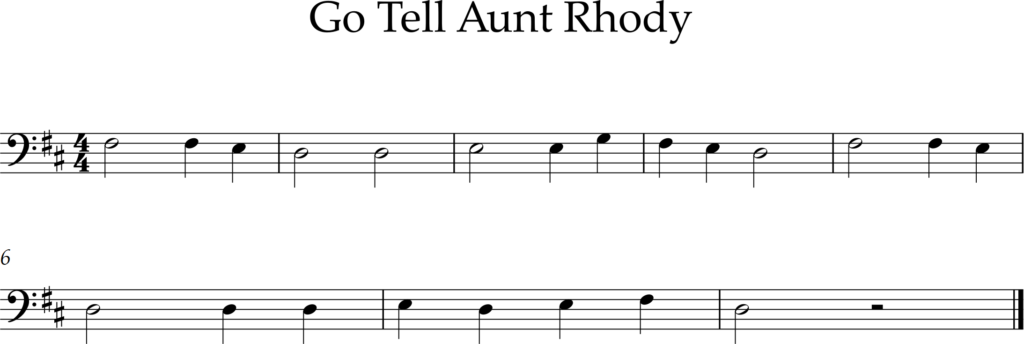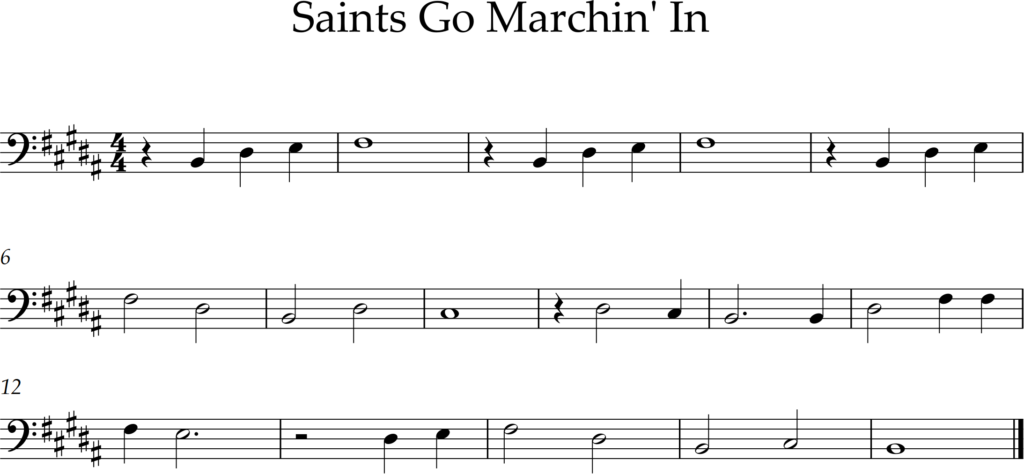Middle F-sharp (fourth line of the bass staff) uses the same F-sharp key as the low F-sharp covered in lesson 3. The only fingering difference between low F# and middle F# is the half-hole needed for the upper octave. Be sure to keep the whisper key engaged with your left thumb.
“Half-hole” is not a completely accurate term. You might need to open a little more or a little less of the hole to get the middle Ab to speak clearly in the upper octave.
- If the F# growls (too much low octave), OPEN MORE of the top hole.
- If the F# squeaks or sounds really airy, OPEN LESS of the top hole.

Matching Pitch on F#
This note tends to be very sharp. Play this exercise with a drone on F#.
- Voice a low tongue vowel (hot or putt).
- Create space between your teeth and in your oral cavity (“hot pizza”)
- Cover less of the hole.

F# Octaves
- F-sharp requires a more open half-hole than G for a clear tone.
- You don’t need to press the low F key when playing F-sharp because it goes down automatically when the f-sharp key is pressed.
- Pivot or roll your finger downward for the half-hole instead of sliding. The roll/pivot motion is much more accurate and efficient than the slide.

Now you know the notes for this one-octave G major scale. The half-covered circle above middle F# and G is a reminder to half-hole these notes. The resonance key is not used on half-hole F#, only for the half-hole G.

Middle E to F#
Playing from E to F# is tricky because a lot of fingers have to move, and the top finger has to shift from full coverage to half-hole on the F#. Isolate these two notes and repeat them using as many rhythm and articulation patterns as you can create. Here are just a few suggestions:

Clouds and Sunshine
This exercise includes two short melodic ideas, each in minor and then major. Which version sounds like “clouds”, and which one sounds like “sunshine”?


Saints Go Marchin’ In
The tune is written in the key of B major which has 5 sharps – F#, C#, G#, D#, and A#. These last three sharps (G#, D#, A#) might look unfamiliar but you already know them as Ab (G#), Eb (D#), and Bb (A#). Focus on the D# (fingered like Eb) for this tune.



Feedback/Errata